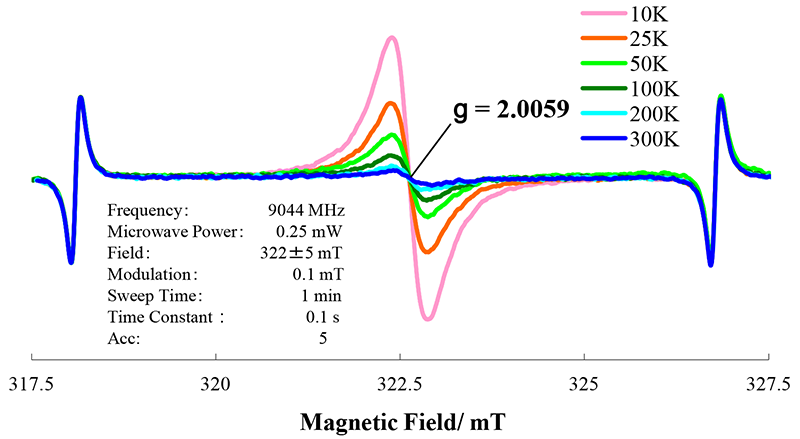ESR of Materials - Semiconductor 1-
ER170006
Solid substances can be divided into insulators (108 Ω · m or more), semiconductors (10-5 to 108 Ω · m), or conductors (10-5 Ω · m or less) depending on the resistivity. In general, semiconductors also have some of the following properties.
- Temperature dependence of resistivity
- Rectification
- Bipolar conduction
- Hall effect
- Impurity effect
- Photo-electric effect
- Thermo-electric effect
Semiconductors can be classified into element semiconductors composed of one element and compound semiconductors composed of two or more elements such as inorganic compound semiconductors, oxide semiconductors, organic semiconductors, etc. Furthermore, semiconductors are classified as intrinsic semiconductors that do not contain impurities and impurity semiconductors that contain impurities. By the ESR analysis of semiconductors, it is possible to evaluate the structure, concentration of impurities (defects), the response against light, heat, electric field, and deterioration characteristics.
Amorphous silicon (a - Si) is an amorphous semiconductor mainly composed of silicon which is generally used for solar cells and thin film transistors. Dangling bond (DB) is often detected in amorphous silicon, which is disconnected Si bond occupied by unpaired electron. It is known that there is a good correlation between the emission efficiency of a - Si and the number of DBs [1]. For example, the emission intensity attenuates as the number of DB increases. ESR evaluation is useful for understanding how much DB is generated in the process of a-Si production and how much degradation accompanying the creation of DB proceeds due to heat or light stimulation.
As mentioned above, ESR gives indices for improving physical properties of semiconductors. In recent years, DB concentration has become low due to improvement of manufacturing technology. As a result, it is often difficult to detect ESR signal from DB at room temperature. Even in such case, cryogenic temperature measurement (ES - CT 470) is often carried out. Figure 1 shows the ESR signal of the silicon DB observed when it is cooled from room temperature to cryogenic temperature.

Fig.1 ESR signal of the dangling bond in amorphous Si.
[1] R. A. Street, J. C. Knights, and D. K. Biegelsen (1978):Luminescence studies of plasma-deposited hydrogenated silicon. Physical. Review. B18, 1880-1891.
- Please see the PDF file for the additional information.
Another window opens when you click. 
PDF 544 KB
SEARCH APPLICATIONS
Related Products
Are you a medical professional or personnel engaged in medical care?
No
Please be reminded that these pages are not intended to provide the general public with information about the products.
